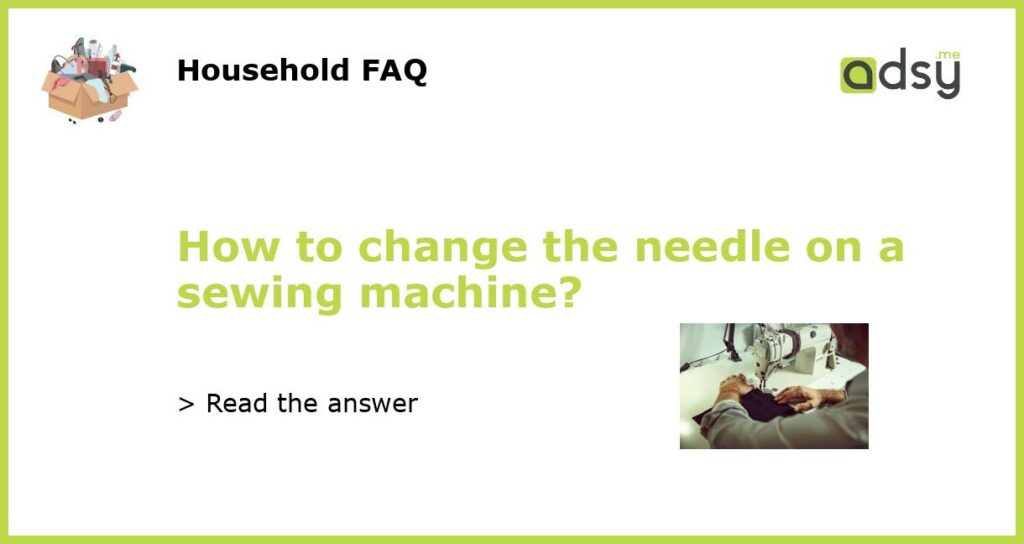Understand the Different Types of Needles
Before you can change the needle on your sewing machine, it’s important to understand the different types of needles available. Sewing machine needles come in various sizes and types, each designed for a specific purpose.
The most common types of sewing machine needles include universal needles, ballpoint needles, stretch needles, and leather needles. Universal needles are the standard needles used for most general sewing projects. Ballpoint needles are designed for knit fabrics to prevent snagging and running. Stretch needles have a deeper scarf to prevent skipped stitches when sewing stretch fabrics. Leather needles have a chisel-shaped point for sewing leather and suede.
By understanding the different types of needles, you can choose the most appropriate needle for your specific sewing project.
Prepare Your Sewing Machine
Before changing the needle, it’s important to prepare your sewing machine. Start by turning off the machine and unplugging it from the power source. This will prevent any accidents or injuries while changing the needle.
Next, locate the needle clamp screw or release lever on your sewing machine. This is typically found on the left side of the needle bar. Loosen the screw or release the lever to release the current needle.
Once the needle is released, carefully remove it from the machine and set it aside. Be cautious while removing the needle to avoid any accidental injuries. If the needle is broken or damaged, use a pair of needle-nose pliers to remove any broken pieces.
Insert the New Needle
Now that you’ve removed the old needle, it’s time to insert the new needle. Start by ensuring that the flat side of the needle is facing towards the back of the machine. This is important as it ensures the needle is inserted correctly.
Hold the needle with one hand and insert it into the needle clamp with the other hand. Push the needle up as far as it will go, ensuring that it is straight and secure.
Tighten the needle clamp screw or close the release lever to secure the new needle in place. Be sure not to overtighten the screw as this may cause the needle to break or bend.
Test and Adjust the Needle
After changing the needle, it’s important to test and adjust the positioning if necessary. Lower the presser foot and manually turn the handwheel to ensure the needle moves up and down smoothly without hitting any parts of the machine.
If the needle hits any part of the machine or the fabric, adjust the needle position by loosening the needle clamp screw and repositioning the needle slightly. Once the needle is positioned correctly, tighten the screw to secure it in place.
You can also test the stitch quality on a scrap piece of fabric to ensure that the needle is working properly. If the stitches are uneven or skipped, it may indicate that the needle needs to be adjusted or replaced.
Dispose of the Old Needle Properly
Once you’ve successfully changed the needle on your sewing machine, it’s important to dispose of the old needle properly. Do not simply throw it in the trash as this can pose a risk of injury to others.
One option is to use a needle disposal container specifically designed for used sewing machine needles. These containers are puncture-resistant and can safely hold used needles. You can find these containers at most sewing supply stores or online.
Another option is to use a small plastic bottle or jar with a secure lid. Place the old needle inside, seal the lid tightly, and label the container as “Used Needles” to prevent accidental injuries.
By following these steps, you can safely and effectively change the needle on your sewing machine.






